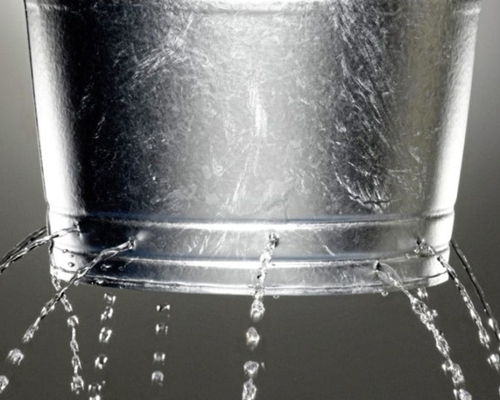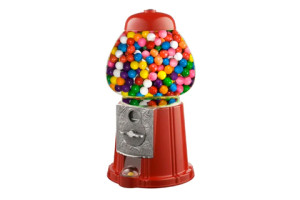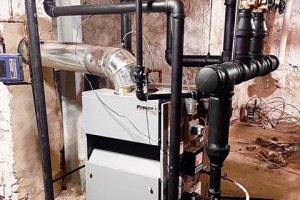
Hello, old friend. I’m writing today to say thanks, and to say farewell. This will be my last column.

The question was in the Manchester Evening News, a British newspaper, and it caught my eye when I was going through my daily Google Alerts on things that have to do with heating. The reader asked, “Does it pay to turn the heat off if I’m looking to save money on my heating bill?”
This made me think back to the late, great Gil Carlson, who, when talking about saving money with pumps, used to say, “No pump is more efficient than a pump that is off. It uses no electricity whatsoever.”
I always admired Gil for his way of thinking deeply.
The same applies to boilers, of course. If you shut it off you will definitely save money. You may freeze to death, but you’ll leave us whilst being in fine fiscal shape.
I thought that would be the answer the expert at the Manchester Evening News would give to the reader's questions, and I wasn’t far from wrong. In Europe, and especially in the U.K., they seem to have fallen in love with these heating clocks that work alongside the thermostats. The idea is to have the system come on with a big morning boost and fill the house with warmth. They do this by running the clock for a time that the homeowner arbitrarily selects. Once warm, the homeowner then gets to dial in the number of minutes out of the following hours when the clock will override the thermostat and turn off the heat. If the homeowner finds that she can turn off the heat for, say, 15 minutes and still be comfortable, the clock people suggest that she now try having it off for 20 minutes, or even 30 minutes. The goal is to keep stretching the off period until the frugal homeowner becomes miserable.
This is why there are also divorce courts.
But if you’re looking to save money, and your romantic life can take a backseat to that, a boiler that is off will certainly do that for you.
On our side of the ocean, I’ve heard a similar question more times than I can remember, and it usually comes at me from homeowners. They ask, “If I turn down the heat, does it take more fuel to catch up when I turn the heat back on? You know because everything got cold?”
What do you think?
I’ve watched homeowners ask contractors that question and most of the contractors will nod and say that it does take more heat to get the temperature back up to where it was before the homeowner turned it down. When the homeowner asks why this is, the contractor will invariable say, “Well, because everything got cold. The walls, the floors, the concrete. It all got cold. Now you have to start all over again. From scratch. That’s costly. It’s best to leave the thermostat alone if you want to save fuel.”
You want to know who really loves that answer? Fuel-oil dealers. They’re selling the fuel that heats the house and they would like it if their customers kept the temperature at 72° F every day of the year. Or better yet, 80° F. To a fuel-oil dealer, a house is a vending machine.
But does a house really need to catch up? And if so, will that require more fuel than you would use if you had just kept your hands off the thermostat?
I found the answer to that in a very good book, written in 2002 by Lewis Carroll Epstein (and isn’t that a delightful name?). He called this 582-page tome, Thinking Physics, and he wrote it for non-scientists like me. He used cartoons and plain English to explain the principles of physics and I loved every page.
I got to the part where he asks that question about whether it’s cheaper to keep the house at a constant temperature or to lower the temperature. He also addressed that does-the-house-have-to-catch-up business.
And he did all of this by talking about a leaky bucket. I loved that because it was so visual. Here, open your mind’s eye:
Imagine a metal bucket that has a hole in its bottom. The bucket will be the house. The hole will be the heat loss. Now fill the bucket with water. That’s the heat. The more water you put into the bucket, the greater the static weight of the water will be over the hole, and the faster the water will leave the bucket. That makes sense, doesn’t it? You’ve watched that happen. The higher you stack water, the heavier it gets at its bottom, and that’s why the flow rate through the hole increases. That’s water pressure.
Okay, so now let’s equate the amount of water in the bucket, which is the house, with degrees of heat on the Fahrenheit scale. The hotter you make the inside of the house (by adding Btu), the more the house will lose Btu through leaks to the outside. So, for instance, if it’s 0° F outside and 72° F inside, you’ll lose a certain amount of heat. But if you lower the inside temperature to 60°F by using fewer Btu you’ll lose heat at a slower rate because the temperature difference from inside to outside is not as wide. Equate it to the water level in the bucket. The lower the level of the water, the slower the heat loss becomes.
Our goal, if we’re looking to maintain 72° F inside on the day when it’s 0° F outside is to add just the right amount of heat to replace what’s leaving though the leaks in the house.
So take your pitcher and pour water into the bucket so that the level sits right at the top of the bucket even as the water flows out through the hole in the bottom of the bucket.
Can you see it?
Good.
Alright, now put down the pitcher and let all the water drain out of the bucket. When the bucket is empty, this will represent a boiler that’s off and a house that’s as cold inside as it is outside. The homeowner is saving money on fuel right now because she’s not burning any fuel at all. She’s probably miserable but that’s another matter.
Now let’s turn it back on. Grab your pitcher and fill the bucket right up to the top. Do you see how you’re now back to where you started? The bucket is leaking and you’re maintaining the water level by continuously adding water to replace what’s leaking out of the hole.
But the bucket didn’t get any larger, did it? No, it didn’t, and neither did the house. So the delightfully named Lewis Carroll Epstein tells us that a homeowner won’t burn any extra fuel while the house comes back up to 72° F inside. It’s just like the leaky bucket. And setting the thermostat to 90° F doesn’t make the house get warm any faster.
But to me, what matters most in all of this is the level of comfort. When you turn down the heat, the stuff in the house will certainly get cold and our bodies will react to those cold surfaces by giving up Btu we produce by being alive. We feel uncomfortable. So maybe we put on more clothing, or perhaps we use a hot-water bottle to stay warm, as the Brits love to do.
Speaking of which, I spotted another story out of the U.K. on my Google Alerts. A young man was writing in about his lady friend who told him that her hot-water bottle wasn’t working. The young man asked what she meant by that and she said that she had filled the hot-water bottle with cold water three hours ago and it still wasn’t hot.
There are so many misunderstandings out there. I think our job is to keep smiling, and to keep telling stories that help people understand.
And that’s fun!

Hello, old friend. I’m writing today to say thanks, and to say farewell. This will be my last column.

My six-year-old grandboy, Brendan, was in the vestibule of the diner when the bubblegum machine caught his attention. It was one of those spiral models that appeared in t...

Subdural posed a question on The Wall at HeatingHelp.com in the Strictly Steam section, where some of the sharpest knives in the drawer post every day. The question was a...